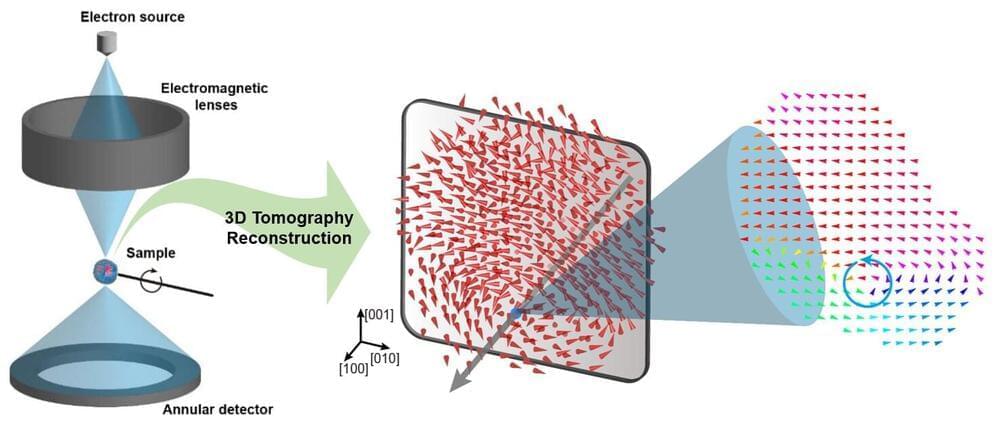Jun 2, 2024
A 20-year-old puzzle solved: Researchers reveal the ‘three-dimensional vortex’ of zero-dimensional ferroelectrics
Posted by Paul Battista in category: nanotechnology
Prof. Sergey Prosandeev and Prof. Bellaiche (who proposed with other co-workers the polar vortex ordering theoretically 20 years ago), joined this collaboration and further proved that the vortex distribution results obtained from experiments are consistent with theoretical calculations.
By controlling the number and orientation of these polarization distributions, it is expected that this can be utilized in a next-generation high-density memory device that can store more than 10,000 times the amount of information in the same-sized device compared to existing ones.
Dr. Yang, who led the research, explained the significance of the results, “This result suggests that controlling the size and shape of ferroelectrics alone, without needing to tune the substrate or surrounding environmental effects such as epitaxial strain, can manipulate ferroelectric vortices or other topological orderings at the nano-scale. Further research could then be applied to the development of next-generation ultra-high-density memory.”





 “Batteries are the crux of many of the most important emerging technologies in both the civilian world and, important to our profession, on the battlefield,” said United States Military Academy Cadet Michael Williams. “More energy dense batteries allow, for instance, greater range on electric vehicles, longer battery lives for radios, and longer flight times for drones. Our work helps make manufacturing these batteries easier.”
“Batteries are the crux of many of the most important emerging technologies in both the civilian world and, important to our profession, on the battlefield,” said United States Military Academy Cadet Michael Williams. “More energy dense batteries allow, for instance, greater range on electric vehicles, longer battery lives for radios, and longer flight times for drones. Our work helps make manufacturing these batteries easier.”











